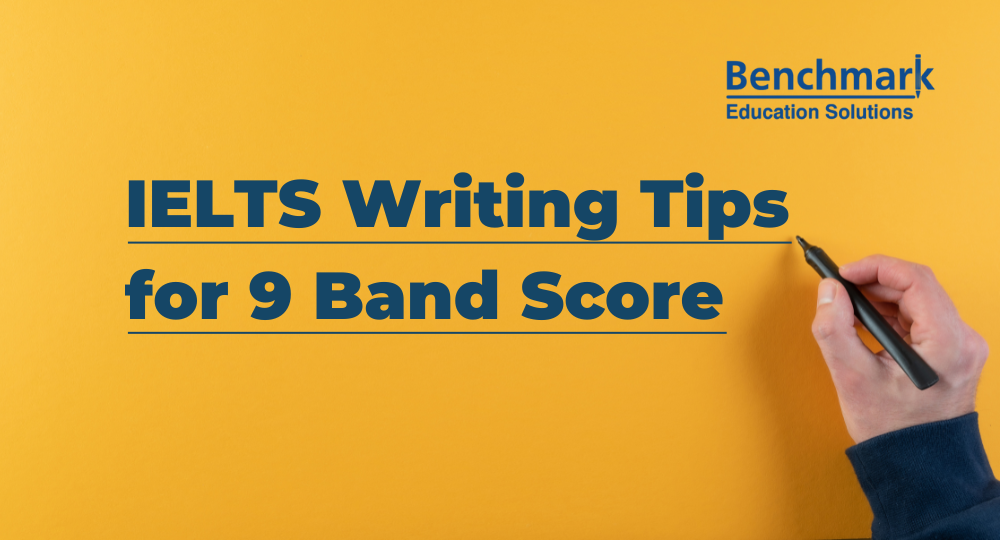

It’s especially difficult to achieve a 9 band in the IELTS Writing section. However, with the strategies we will discuss in this blog, we can help you get closer to the 9 band.
Table of Contents
1. Start with Task 2
Task 2 of the writing section carries more weight than the task 1 in the IELTS writing section. Thus, you must make sure that you start with the IELTS essay first. This will help you have enough time and effort to do task 2 because it has a greater impact on your overall writing band score
Example: Bob tries to start with task 2 to alleviate pressure. He aims to spend 40 minutes on Task 2 and 20 minutes on Task 2. This enables him to manage his time effectively and write two high-quality responses for both tasks.
2. Highlight Key Points in the Prompt
Ensure you focus on the keywords in the writing topic. Carefully read the prompt and identify the key points you should focus on. By doing so, you are ensuring that you address the topic accurately. This will help you prevent going off-topic and make sure your essay is relevant.
Focus on Key Words: Carefully read the prompt and highlight or underline key points to ensure you address the topic accurately. This prevents you from going off-topic and ensures your essay is relevant.
Example: If a task 2 prompt asks whether large corporations should compensate new employees with an increase in salaries if they bring more money into the company, highlight the words “large corporations,” “increase in salaries,” and “new employees.” By doing so, you can make sure that you focus on these essential elements of the prompt.
3. Plan Your Ideas & Outline
Make sure that you give time before you write your essays to brainstorm and create an outline. This will ensure you have a roadmap of what to write before you begin to write. This can help produce a coherent essay, as if you start writing without a plan, you can easily go off-topic. Think about the various viewpoints and structure your essays logically.
Example: Bob makes sure that he saves some time, in the beginning, to brainstorm multiple viewpoints on the prompt and think about potential arguments and counterarguments for each of the viewpoints. Then he writes an outline and this helps him write a well-structured essay.
4. Keep the Introduction Simple
You don’t need to overcomplicate the introduction. Remember to paraphrase the question prompt and state which side you are on clearly. Avoid writing too much and focus more on brevity and clarity.
Example: Bob paraphrases the prompt by changing the sentence structure and using synonyms where appropriate. He states his position clearly: “I completely agree with this viewpoint as it acknowledges that newer employees should be rewarded if they are doing more than expected”.
5. Structure Your Main Body Paragraphs
Stick with only three main body paragraphs. Each paragraph should have a distinct idea, with one dedicated to counterarguments and refuting these counterarguments.
Example: 1st paragraph: Bob explores the idea that large corporations should increase salaries for new employees if they contribute significantly to the company’s revenue. He uses examples that support his argument, such as stating that new employees generate high sales figures and successfully manage key projects.
2nd paragraph: He discusses the necessity of a structured hierarchy in large corporations, emphasizing how differentiated pay scales can reflect the varied levels of responsibility and contribution among employees.
3rd paragraph: Bob acknowledges the counterargument that all employees, regardless of tenure, contribute to the company’s success. However, he refutes this by pointing out the unique value and fresh perspectives that new employees bring, which can justify an increase in their salaries.
6. Use Cohesive Devices Sparingly
Make sure that you use cohesive devices to ensure that you have smooth transitions between sentences and paragraphs. Try to maintain coherence but not use them too much to the extent to which it distracts the reader.
Example: Bob uses cohesive devices like “however” to transition between paragraphs and ideas. Within paragraphs, he minimizes their use to maintain flow and coherence.
Achieving a band 9 in IELTS Writing requires a strategic approach, consistent practice, and a clear understanding of the exam criteria. Make sure to follow the strategies and tips listed here and you should be able to close the gap to achieve a 9 band in IELTS Writing.




